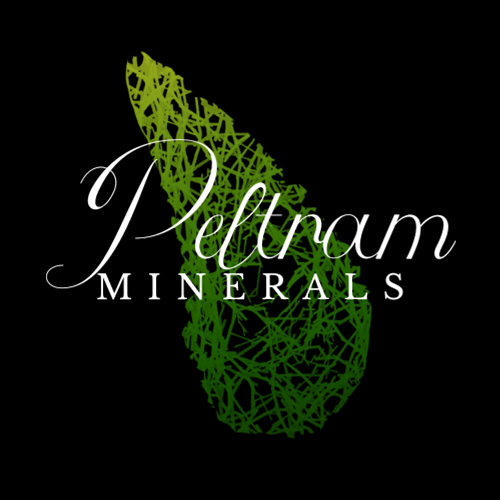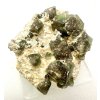Fluorite – Erongo Namibia
Locality: Erongo Namibia
Dimensions: 5,5 x 5,5 x 1,5 cm
General
Fluorite is a halide and is classified in the cubic crystal system. It is found in nature as a single vein filler or in crystals, in combination with other minerals (commonly baryte). The most common forms of crystals are the cube, the octahedron (octahedron), the rhombic dodecahedron (consisting of 12 rhombohedrons) and their double-walled forms. Skeletal crystals are very common.
Characteristic features include perfect octahedral cleavage. It may be transparent, translucent to opaque. Vein fluorite is characterized by a varied alternation of colours in bands ranging from white, yellow, brown, green, blue, violet to black, and is also usually clear, other colours being rare. The crystals are usually in a combination of one to three shades.
Fluorite is a fluorescent mineral, which means that it can exhibit beautiful fluorescent colours under UV light, and it commonly appears in green, blue, purple or yellow. This property is due to the presence of small amounts of elements such as yttrium or cerium in its structure.
In industry, fluorite is mainly used to produce hydrofluoric acid, which is essential for the production of aluminium, glass and also for chemical processes in metal mining. Fluorite is also important in metallurgy where it is used as a flux in ore smelting, helping to lower the smelting temperature and improve the flow of the flux.
Erongo, Namibia
Fluorite from the Erongo Mountains in Namibia is highly valued for its aesthetics and variety. The area is known for fluorite in a variety of colours including green, purple, blue and yellow. Fluorite crystals from Erongo often exhibit perfect cleavage and can be transparent to opaque.
One of the distinctive features of fluorite from this locality is its combination with other minerals such as crystal (quartz) and scoria (black tourmaline). These combinations produce aesthetically interesting clasts and aggregates.










